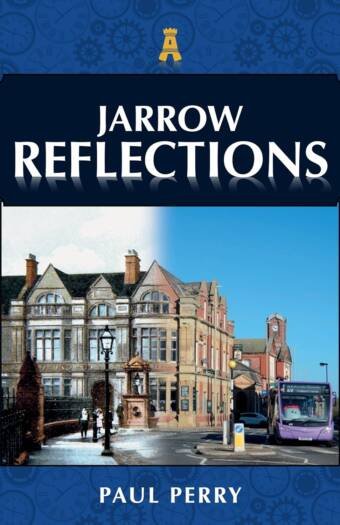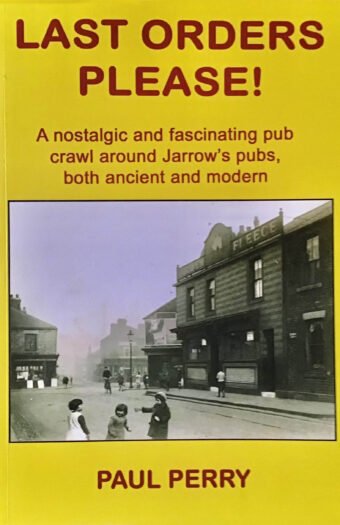There was a time when there was not a town called Jarrow; fields streams and riverbanks were all that existed. Eventually, settlements were raised in the area. Without doubt, the most memorable of the early settlements was an order of monks at the monastery at Donmouth, as it was referred to then. This was home to Jarrow’s most celebrated resident, the Venerable Bede: monk, scholar, historian, and very probably one of the most remarkable men this country has ever produced, who was responsible for writing the oft-referred Northumbrian Chronicles, to one of the few learned works to survive from those days. At that time Jarrow was a centre of learning, a beacon of light in a dark age. If all that Jarrow had to offer history was a monk and a book then it would still be worthy of note, but Jarrow had so much more to give. The proximity of mineral resources and water-borne transportation gave rise to the period of industrialisation which so dominated the life of the town from the eighteenth century to recent times. The shipyards, steelworks, coal mines, chemical plants, and the fuel storage tanks, have all in turn contributed towards the growth and wealth of the town.
When talking of Jarrow it is not always possible to talk of light and life. No work which ever purports in any way to tell the story of the town can ignore the hardship and privation suffered by its people during the interwar years of the great depression. Subject to a greater rate of unemployment than any other borough in the land, Jarrow came to epitomise the unhappy state of affairs endured by so much of industrial Britain during that period.
Nothing, depression and wars included, lasts forever, and the post war years saw a marked improvement in the well-being of the town and its people. The improvement took many forms: new schools, public houses, recreational facilities, a state of the art shopping complex, and of course, the re-housing of many thousands of residents to Jarrow’s own garden suburb, Primrose.
There have been other changes too. In strict legal terms the borough of Jarrow no longer exists, amalgamated in 1974 into the much larger borough of South Tyneside. The working base of the town has undergone equally radical alteration. Little of the lucrative heavy industry of old remains; instead, many would consider Jarrow a dormitory town, home to the office and shop personnel of the commercial enterprises in the surrounding area.
Through the days of triumph and tragedy, the outstanding feature of Jarrow has been its people. Famous writers, singers, local characters and villains have grown up in the town, but it is the ordinary Jarovian possessing a rare mixture of honesty, decency and good humour that has given the town its unique personality. In return all are marked forever by the town and have a genuine affection for it and proud to be called Jarra Lads and Lasses.
So let’s take one more backwards glance down the years, into the school yards and churches, the factories and the shops, the homes and hospitals. Let us meet the men and women, our mothers and fathers perhaps, or even ourselves in younger days. You don’t need your hat or your coat; you don’t even have to leave the comfort of your home. With the magic of technology and a little imagination, you will be able to travel back in time once more, along the streets and down the back lanes of your town, my town, our town: Jarrow.
-
Jarrow Reflections
Jarrow Reflections features an exciting collection of historic and modern pictures that are individually merged to reveal how the area has changed over the decades.
-
Last Orders Please!
A nostalgic and fascinating pub crawl around Jarrow’s pubs, both ancient and modern.
-
Now That’s What I Call Jarrow
The sixties, seventies and eighties were decades of great change. Many towns and cities were redeveloped with projects that dramatically affected the character of the place. Local author Paul Perry recaptures it all in this fascinating portrayal of the town and its people over the course of these most nostalgic decades.
-
Jarrow History Tour
Jarrow History Tour offers a fascinating insight into the history of this town in the north-east of England.
-
 Miners white cottages
Miners white cottages -
 Viking Centre
Viking Centre -
 Cemetery Gates
Cemetery Gates -
 Back Albion Street
Back Albion Street -
 Newmarch Street
Newmarch Street -
 Clayton Street
Clayton Street -
 Monkton
Monkton -
 Hibernian Road
Hibernian Road





